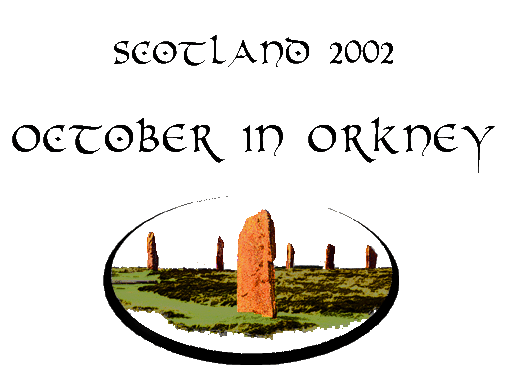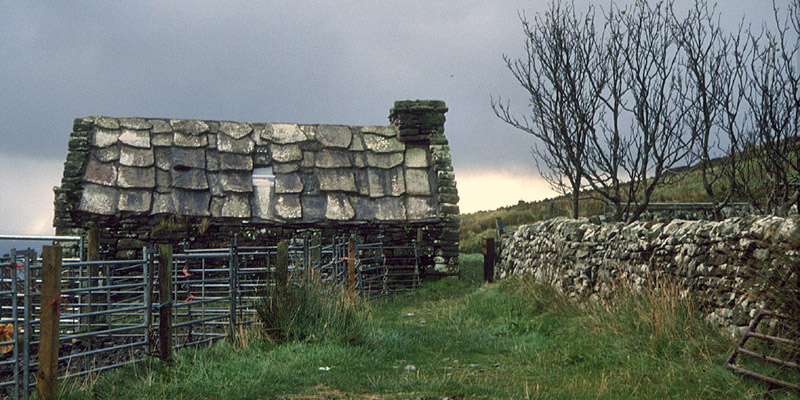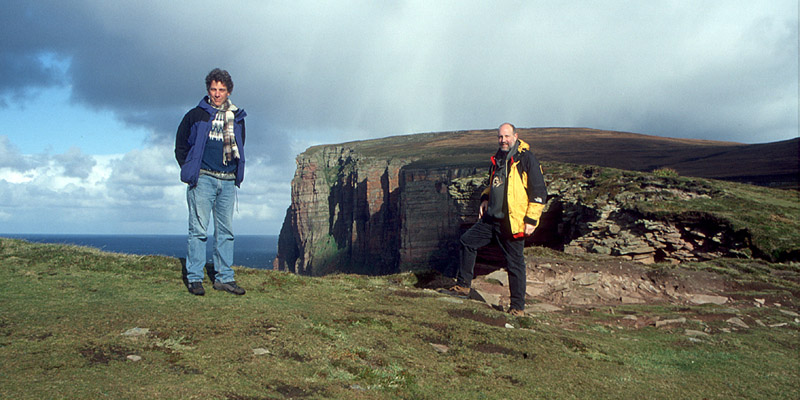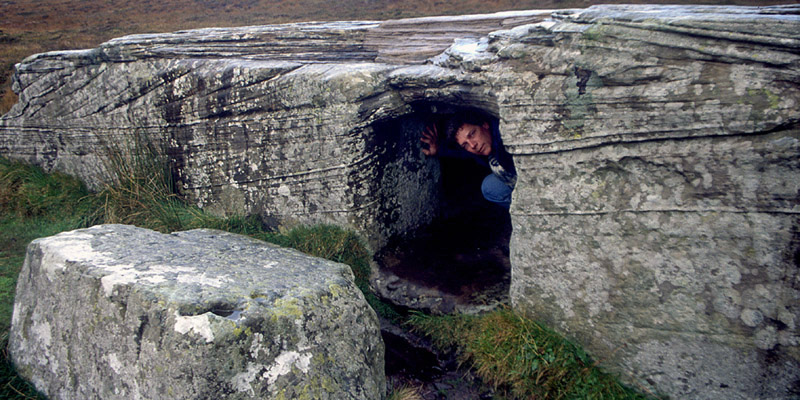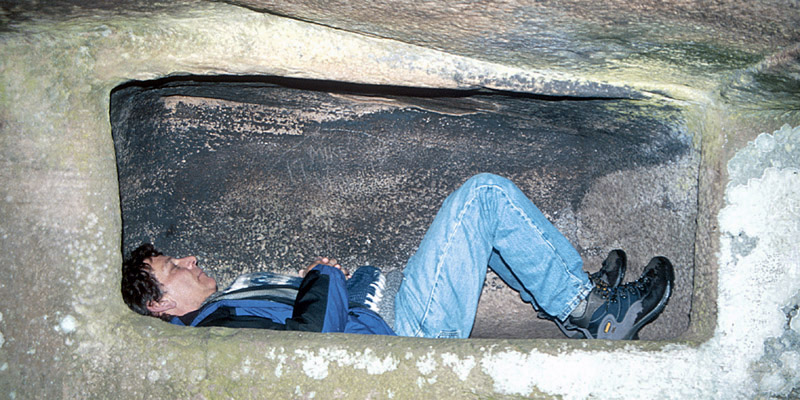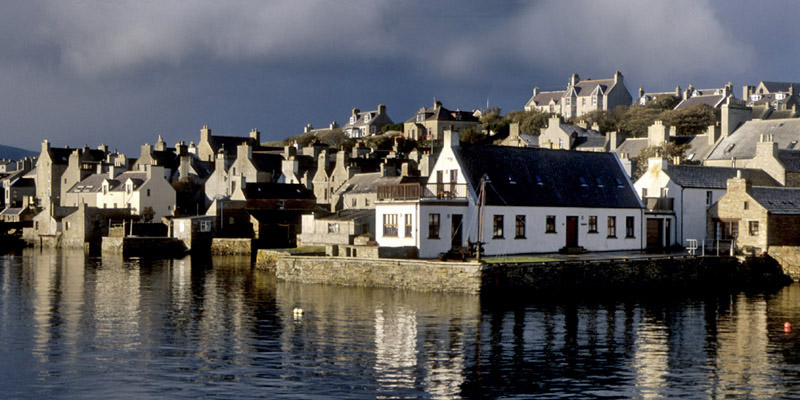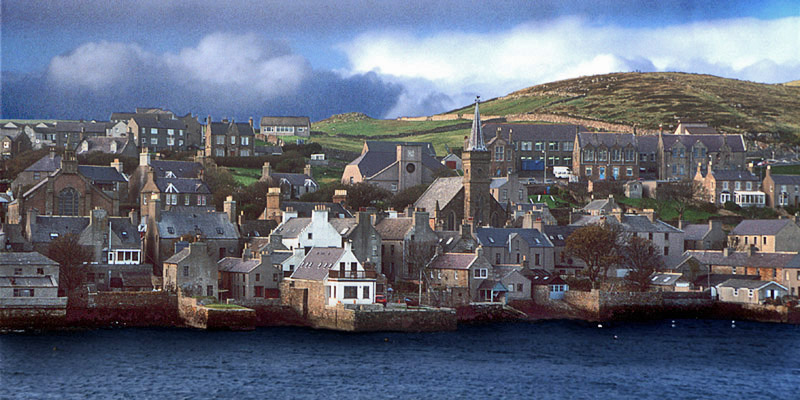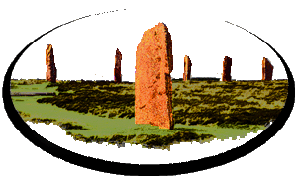5
Saturday
In
the morning we catch a ferry to Hoy, “High Island”, the hilliest in Orkney. Our
intent is to take a three-hour hike to view the Old Man of Hoy, a 450-foot
pillar off the western cliffs. We have managed so far to shield ourselves from
Orkney’s mutable and blustery weather, but on this day we will be exposed. An
odd kind of luck is with us. We are subjected to a five-minute squall about
every half-hour, as is typical here this time of year. But, instead of rain, we
are pelted by a fine, light hail, which bounces harmlessly off us, leaving us
comfortably dry. The Old Man is a fabulous sight, as are the cliffs.
On
the drive back to the ferry, we have time to visit Hoy’s other two famous sites.
The first is the bizarre Dwarfie Stane, a presumed chambered tomb cut into a
single large boulder. We crawl through the opening and find two rectangular
chambers, one to either side. We lie inside and proceed to test the echoic
qualities of the stone’s interior. When Win softly hums the lowest note he
can, it reverberates loudly through the chamber. We are simultaneously spooked
and amused, and spend the next ten minutes humming and laughing.
Our
laughter dies when we visit Orkney’s saddest spot, the grave of Betty Corrigal.
In the 18th century, Betty was charmed by the false promises of a sailor, who
subsequently flew the coop, leaving Betty pregnant and alone. Shamed, she
committed suicide. Neither of Hoy’s parishes would give a Christian burial to a
suicide, and so her lonely grave lies on a desolate moor, on the border between
the two. Some years ago a Christian service was finally read over her.
Back on Mainland, we visit the remains of the Round Church at Orphir,
which stand next to the ruins of a Viking drinking hall, the Earl’s Bu. The
Viking-era church survived nearly intact until the mid-18th century, when much
of its stone was pilfered for another church. Ironically, this replacement
church no longer exists. The Bu was excavated by an archeologist who divined its
location from clues in the Orkneyinga Saga. Adjacent is the small Orkneyinga
Saga Museum, which gives a summary of that saga’s history of the Viking earls of
Orkney. Along with Shetland to the north, the islands were a Norwegian
possession until the mid-15th century, when they were used as collateral for the
promised dowry of Princess Margaret when she married James III of Scotland. The
dowry was never paid, and the two archipelagos were annexed to Scotland. There
is a fringe group in Norway today that wants the country to pay the dowry and
reclaim the two island chains.
Bistro 76 is surprisingly crowded this
evening, and we share a long table with two women who studiously ignore us. When
we mention this to Malcolm the next morning, he is puzzled, until we tell him
that our tablemates were English. He laughs knowingly. Geordies are regarded as
unsophisticated bumpkins by southerners—the next closest thing to Scots. Malcolm
is anything but unsophisticated, but regional stereotypes and prejudices are as
alive in the UK as they are in the US. To be fair, what seemed unfriendly to us
was probably a matter of being polite to the reserved Londoners, similar to the
way we would behave in a crowded elevator. Or maybe they just didn’t like our
looks.
Next
|
